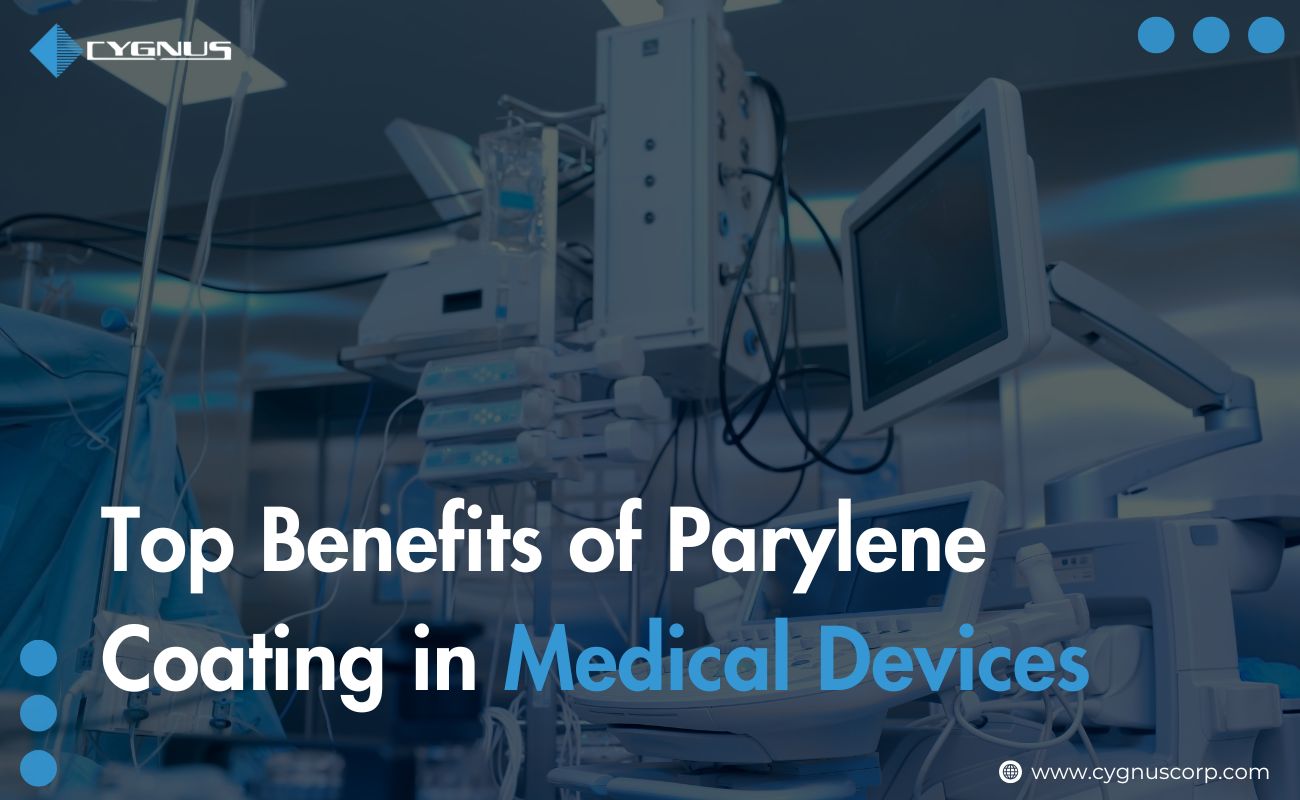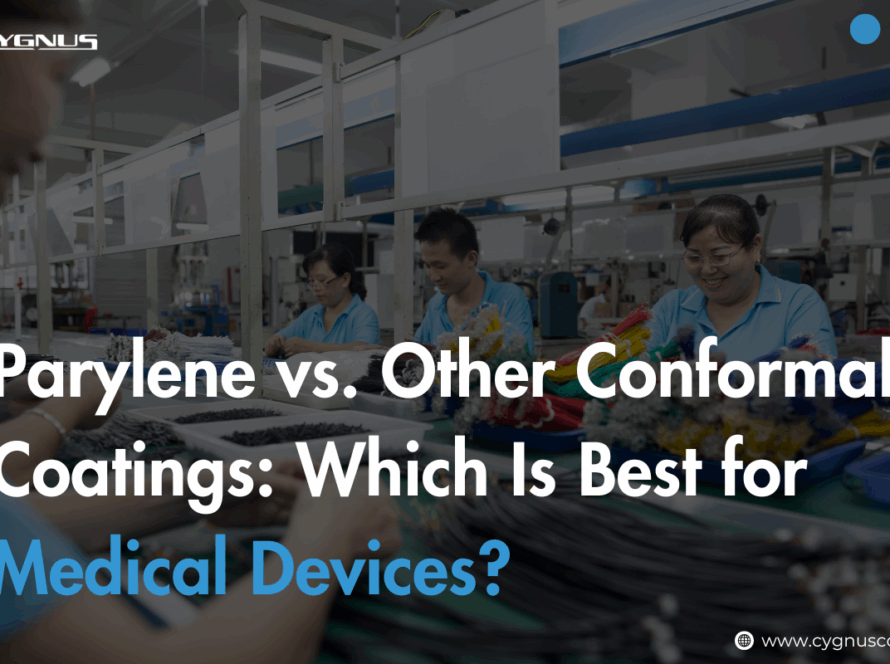Nowadays advanced medical innovation, even the tiniest component in a device can make a life-changing impact. One of the unsung heroes helping improve safety, reliability, and performance is Parylene coating. This high-performance polymer coating is now considered essential for many medical applications, from implants to diagnostic tools.
Let’s explore why Parylene coating in medical devices has become the gold standard and how it’s quietly improving outcomes for both patients and manufacturers.
What Is Parylene Coating and Why Is It Used in Medical Devices?
Parylene refers to a group of polymers applied through a specialized process known as chemical vapor deposition (CVD). In this method, the Parylene is transformed from a solid dimer to a gas, then deposited evenly as a thin, durable film over surfaces—even those with complex geometries.
There are several types of Parylene, but the most commonly used in medical fields include:
- Parylene C: Offers excellent moisture and chemical resistance
- Parylene N: Known for its electrical insulation properties
- Parylene F & D: Engineered for higher temperature stability and enhanced performance
What makes medical-grade Parylene ideal is its safety profile. It meets USP Class VI compliant coatings standards and is FDA approved, making it suitable for long-term contact with human tissue. It’s inert, stable, and non-toxic—everything you want in a medical environment.
Top Benefits of Parylene Coating in Medical Devices:
1. Excellent Biocompatibility:
The first and most important feature is its biocompatibility. Parylene is:
- Non-toxic and hypoallergenic
- Safe for contact with blood, tissue, and internal organs
- Suitable for long-term implantation
Thanks to its neutral chemistry, it doesn’t provoke immune responses or allergic reactions. For manufacturers seeking biocompatible coatings for implants, Parylene is often the top choice.
2. Superior Barrier Against Moisture and Chemicals:
Moisture can be a major enemy of medical electronics and sensitive components. Fortunately, Parylene acts as a moisture barrier coating, shielding devices from:
- Humidity
- Bodily fluids
- Corrosive chemicals like cleaning agents and sterilants
This makes Parylene ideal for devices like infusion pumps, sensors, and lab-on-chip platforms, where protection from contamination is critical. As a USP Class VI compliant coating, it maintains its barrier performance without compromising biocompatibility.
3. Uniform, Pinhole-Free Coverage:
Unlike other coatings that may clump, crack, or bridge gaps, Parylene forms a pinhole-free protective layer:
- It coats evenly—even on sharp edges, tight crevices, and internal channels
- There’s no risk of pooling or weak spots
- Precision is maintained without altering the device’s structure
This is particularly useful in devices like catheters, neural probes, and stents, where even microscopic coating inconsistencies can affect function and safety.
4. Flexibility and Durability:
Medical devices often need to bend, stretch, or twist—especially wearables or minimally invasive tools. Parylene stands up to the task:
- Flexible and resistant to cracking or peeling
- Can withstand vibration, abrasion, and repeated movement
- Ideal for soft, wearable medical electronics or implantable leads
This long-lasting performance means fewer device failures and longer shelf life.
5. Sterilization Compatibility:
Sterility is non-negotiable in healthcare. Parylene coatings are compatible with most standard sterilization processes:
- Ethylene oxide (EtO)
- Gamma radiation
- Autoclave (steam)
After repeated sterilization, medical-grade Parylene retains its physical and chemical integrity. This ensures device safety throughout its lifecycle, even with repeated reuse.
Common Medical Devices That Use Parylene Coating:
Due to its unmatched protective properties, Parylene coating is widely used in:
- Pacemakers and ICDs – protecting internal electronics from body fluids
- Catheters and surgical tools – ensuring smooth, sterile surfaces
- Neural probes and biosensors – maintaining signal accuracy and biocompatibility
- Diagnostic probes and tubing – safeguarding integrity during invasive use
- Drug-eluting stents – enabling controlled release and long-term compatibility
In short, any component that enters the body or interacts with sensitive environments can benefit from Parylene coating in medical devices.
How Parylene Coating Compares to Other Coatings (PTFE, Silicone)?
You may be wondering: why choose Parylene over PTFE (Teflon) or silicone?
| Feature | Parylene | PTFE (Teflon) | Silicone |
| Biocompatibility | Excellent | Good | Excellent |
| Barrier Protection | Superior moisture barrier | Moderate | Lower moisture resistance |
| Conformality | Perfectly uniform, pinhole-free | Less uniform | Can form gaps and bubbles |
| Sterilization Resistance | High (EtO, gamma, autoclave) | Limited | Moderate |
| Application Complexity | Requires CVD system | Spray or dip-coating | Heat-cure coating |
Parylene wins in terms of pinhole-free protective layer, moisture barrier coating, and biocompatible coatings for implants, offering greater safety and durability at a higher—but justified—cost.
Choosing the Right Parylene Type for Medical Use:
Choosing the right Parylene depends on your specific application:
- Parylene C – Most widely used, best for moisture and chemical resistance
- Parylene N – Ideal for dielectric performance and faster deposition
- Parylene F (HT) – For high-temperature, high-performance applications
- Parylene D – Higher temperature resistance with moderate properties
When choosing, consider:
- Required flexibility
- Chemical exposure
- Temperature ranges
- Implant duration and contact type
Manufacturers typically test multiple variants to match both the technical and regulatory needs of the device.
Conclusion:
As medical devices continue to evolve in complexity, so does the need for precision-engineered protection. Parylene coating in medical devices offers unmatched safety, durability, and performance—especially where patient health is on the line.
From implants to wearable sensors, medical-grade Parylene acts as an invisible shield that enhances product reliability and patient safety. With its pinhole-free protective layer, strong moisture barrier coating, and full USP Class VI compliant coating status, it’s no surprise Parylene is becoming the go-to solution for forward-thinking medical device manufacturers.
❓ FAQs
1. Is Parylene coating FDA-approved for medical devices?
Yes, specific types like Parylene C are USP Class VI compliant coatings and approved for long-term medical use by the FDA.
2. Can Parylene withstand sterilization processes?
Absolutely. It resists EtO, gamma radiation, and autoclaving—making it suitable for both single-use and reusable medical devices.
3. What’s the difference between Parylene C and N for medical use?
Parylene C offers better chemical and moisture barrier coating protection, while Parylene N is favored for its electrical insulation and faster deposition.
4. Why is Parylene better than silicone or PTFE for coating implants?
Parylene provides a uniform, pinhole-free protective layer, superior barrier protection, and excellent biocompatibility for implants, making it ideal for critical applications.




